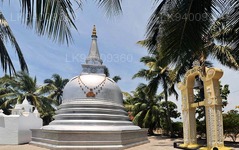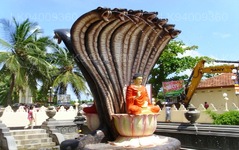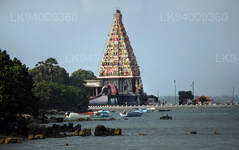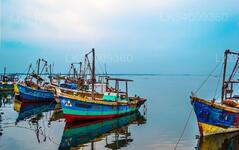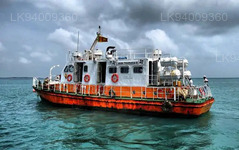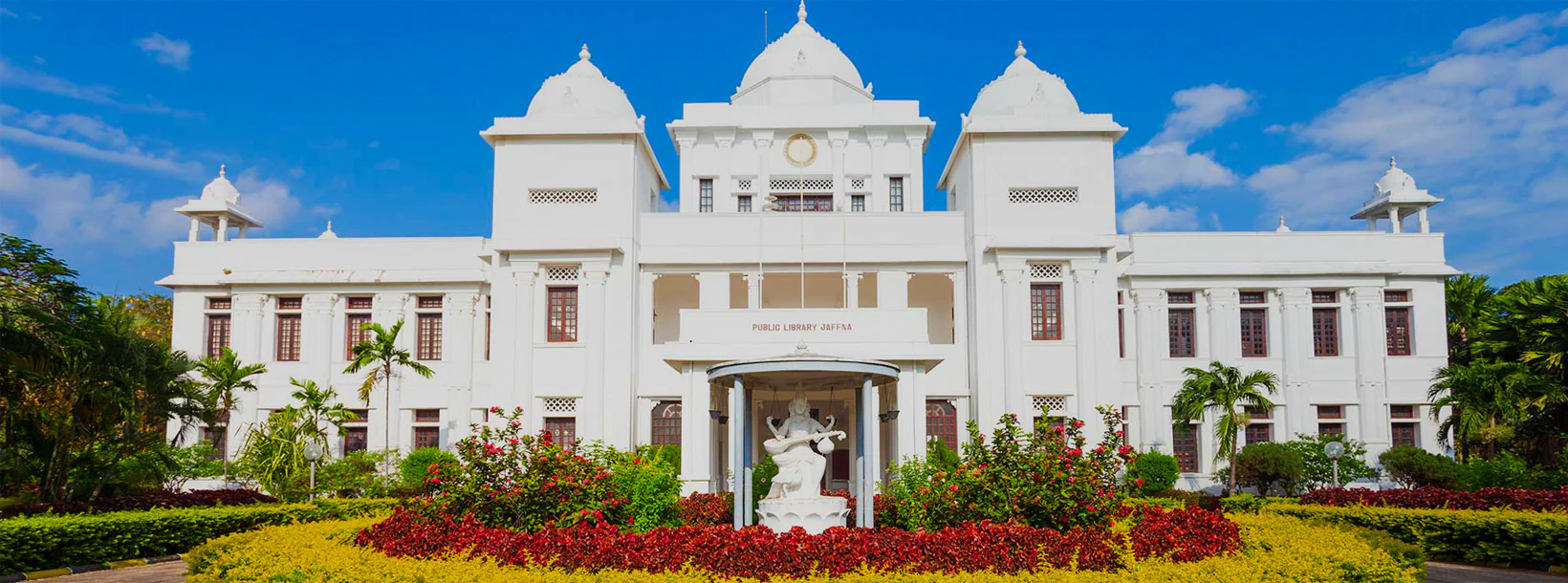
Jaffna City
Jaffna is the main city of Jaffna peninsula in the northernmost district of Sri Lanka. Comfortable intercity busses from Colombo take 10-12 hours to reach the city of Jaffna.
Nagadipa
Nagadeepa Purana Vihara, is deeply rooted in Buddhist tradition and legends
Ancient Roots and Legends
Nagadeepa Purana Vihara's legacy stretches back through the corridors of time, marking its place as one of Sri Lanka's oldest Buddhist temples. Legend has it that this sacred site played host to Lord Buddha during his third visit to the island. The echoes of his sermon are said to resonate through the ages, leaving behind a symbolic footprint as a tangible connection to the divine.
A Tranquil Haven
Nestled amidst the gentle embrace of the Indian Ocean, Nagadeepa Purana Vihara offers a retreat into tranquility. The rhythmic sounds of the waves and the verdant landscape surrounding the temple create an atmosphere conducive to contemplation and spiritual reflection. Visitors find solace in the peaceful ambiance, away from the clamor of modern life.
Harmony of Faiths
Adjacent to Nagadeepa Purana Vihara is the Nagapooshani Amman Temple, a Hindu shrine dedicated to the goddess Bhuvaneswari. This harmonious coexistence of Buddhist and Hindu sanctuaries on the same island exemplifies the religious tolerance and cultural diversity that define Sri Lanka.
Pilgrimage Destination
Devotees and pilgrims from across the country embark on a spiritual journey to Nagadeepa, drawn by the sacred aura of the temple. The annual Nagadeepa Perahera, a grand procession that winds its way through the island, infuses the air with a festive spirit as believers come together to celebrate their faith.
Journey to Nainativu
The pilgrimage begins with a boat ride from Jaffna, offering panoramic views of the northern coastline. The azure waters and coastal vistas create a prelude to the spiritual exploration awaiting travelers on the sacred island. The journey itself becomes an integral part of the experience, unveiling the cultural and natural beauty of the region.
About Jaffna District
Jaffna is the capital city of the Northern Province, Sri Lanka. 85% of the populations of the Jaffna and Kilinochchi districts are Hindus. The Hindus follow the Saivite tradition. The remainders are largely Roman Catholics or Protestants, some of whom are descendants of colonial settlers, known as Burghers. The Tamils are divided along caste lines, with the farmer-caste Vellalar forming the majority. Sea products, red onion, and tobacco are the main products in Jaffna.
Jaffna is home to beautiful Hindu temples. An Old Dutch Fort still stands well preserved within which is an old Church. Another example of Dutch architecture is the King's House. No visit to Jaffna is complete without tasting the exquisite Jaffna mango, reputed for its sweetness. About 3 km away is the majestic Nallur Kandaswamy Temple, home to the largest religious festival in Jaffna. The Kayts Harbour is an ancient ship docking site in the Jaffna region.
About Northern Province
The Northern Province is one of the 9 provinces of Sri Lanka. The provinces have existed since the 19th century but they didn't have any legal status until 1987 when the 13th Amendment to the 1978 Constitution of Sri Lanka established provincial councils. Between 1988 and 2006 the province was temporarily merged with the Eastern Province to form the North-East Province. The capital of the province is Jaffna.
Northern Province is located in the north of Sri Lanka and is just 22 miles (35 km) from India. The province is surrounded by the Gulf of Mannar and Palk Bay to the west, Palk Strait to the north, the Bay of Bengal to the east and the Eastern, North Central and North Western provinces to the south.The province has a number of lagoons, the largest being Jaffna Lagoon, Nanthi Kadal, Chundikkulam Lagoon, Vadamarachchi Lagoon, Uppu Aru Lagoon, Kokkilai lagoon, Nai Aru Lagoon and Chalai Lagoon.Most of the islands around Sri Lanka are to be found to the west of the Northern Province. The largest islands are: Kayts, Neduntivu, Karaitivu, Pungudutivu and Mandativu.
The Northern Province's population was 1,311,776 in 2007. The majority of the populations are Sri Lankan Tamils, with a minority Sri Lankan Moor and Sinhalese population. Sri Lankan Tamil is the major language spoken in the province by the vast majority of the population. The other language spoken is Sinhala by 1 percent of the population. English is widely spoken and understood in the cities.

